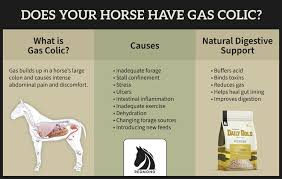Dehydration in Working Camels: How to Spot It and Keep Them Safe
Camel health in hot climates. Even though camels are known for their ability to survive in extreme conditions, working camels can still suffer from dehydration—especially in hot climates or under heavy workloads. When left unchecked, dehydration can lead to serious health issues, performance loss, and even death.
In this post, we’ll walk you through how to spot dehydration early, what causes it, and how to treat and prevent it using effective care practices and veterinary products from Standlee Meds.
What Causes Dehydration in Camels? Camel health in hot climates
Despite their desert adaptations, camels lose fluids just like any other animal—especially when:
- Working long hours in hot environments
- Traveling long distances
- Suffering from diarrhea, fever, or infections
- Consuming low-quality feed or insufficient electrolytes
- Lacking consistent access to clean water
Camels may not show symptoms until the situation becomes serious—so knowing what to watch for is key.
How to Spot Dehydration in Camels
Mild to Moderate Signs:
- Dry mouth or tacky gums
- Reduced skin elasticity (slow recovery after pinching the skin)
- Dull eyes or mild sunken appearance
- Lethargy or disinterest in food
- Reduced urination or dark-colored urine
Severe Signs:
- High body temperature
- Weakness or inability to stand
- Rapid breathing or heartbeat
- Loss of coordination or collapse
If you notice any of these severe signs, contact a vet immediately.
How to Treat Dehydration in Camels
1. Oral Electrolyte Replacement
For mild to moderate dehydration, oral rehydration is the first step:
- Use a balanced electrolyte formula designed for large animals
- Provide clean, cool water alongside electrolyte solutions
🔗 Shop Camel Electrolytes
2. Intravenous Fluids (IV)
In more serious cases where the camel won’t drink or is severely dehydrated:
- A veterinarian will administer IV fluids to restore hydration quickly
- Additional blood tests may be used to check electrolyte levels
3. Supportive Medications
If dehydration is linked to fever, heat stress, or infection:
- Flunixin Meglumine – for reducing fever and inflammation
- Multivitamin Injections – to boost immune and energy levels
- Meloxicam – pain relief and inflammation control
How to Prevent Dehydration in Working Camels
The best cure is prevention. Here’s how you can protect your camels from dehydration:
1. Ensure Unlimited Access to Clean Water
Camels can drink 30–40 liters in one go—always make water available before and after work.
2. Adjust Work Schedules
Avoid working camels during the hottest part of the day. Early mornings or late evenings are safer.
3. Supplement with Electrolytes
Especially during high temperatures or periods of intense labor, add electrolytes to drinking water or feed.
See Camel Supplements
4. Provide Shelter and Rest
Offer shaded areas and allow frequent breaks during hot days.
5. Monitor Regularly
Check hydration status using the skin pinch test, observe behavior, and monitor urine output daily.
Recommended Products for Camel Hydration
At Tacoma Vet Meds, we stock trusted products to help your camels stay hydrated and healthy:
- ✅ Camel Electrolyte Powder
- ✅ Oral Rehydration Gel
- ✅ Flunixin Meglumine
- ✅ Multivitamin Injections
Extra Resource for Camel Owners
For additional reading, check out:
FAO – Camel Water Management Guide
Final Takeaway
Dehydration in working camels is preventable, but it requires close observation, access to clean water, and the right nutritional support. Early detection and treatment can save your camel’s life—and help it perform at its best.
Need help choosing the right hydration or electrolyte solution?
Contact Standlee Meds for product support or recommendations.

